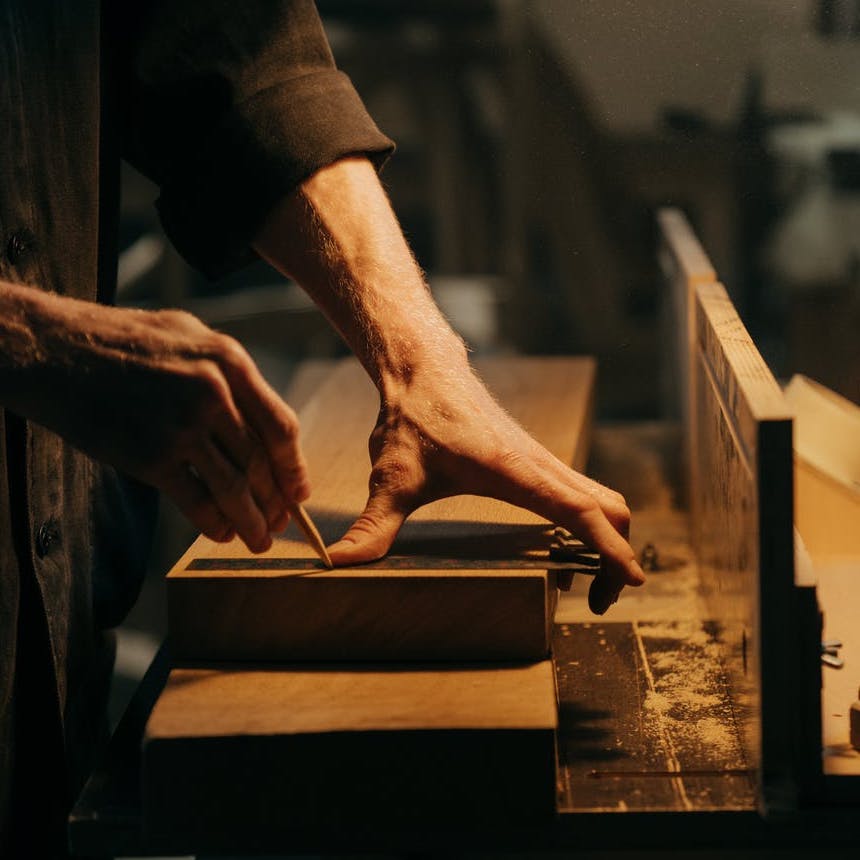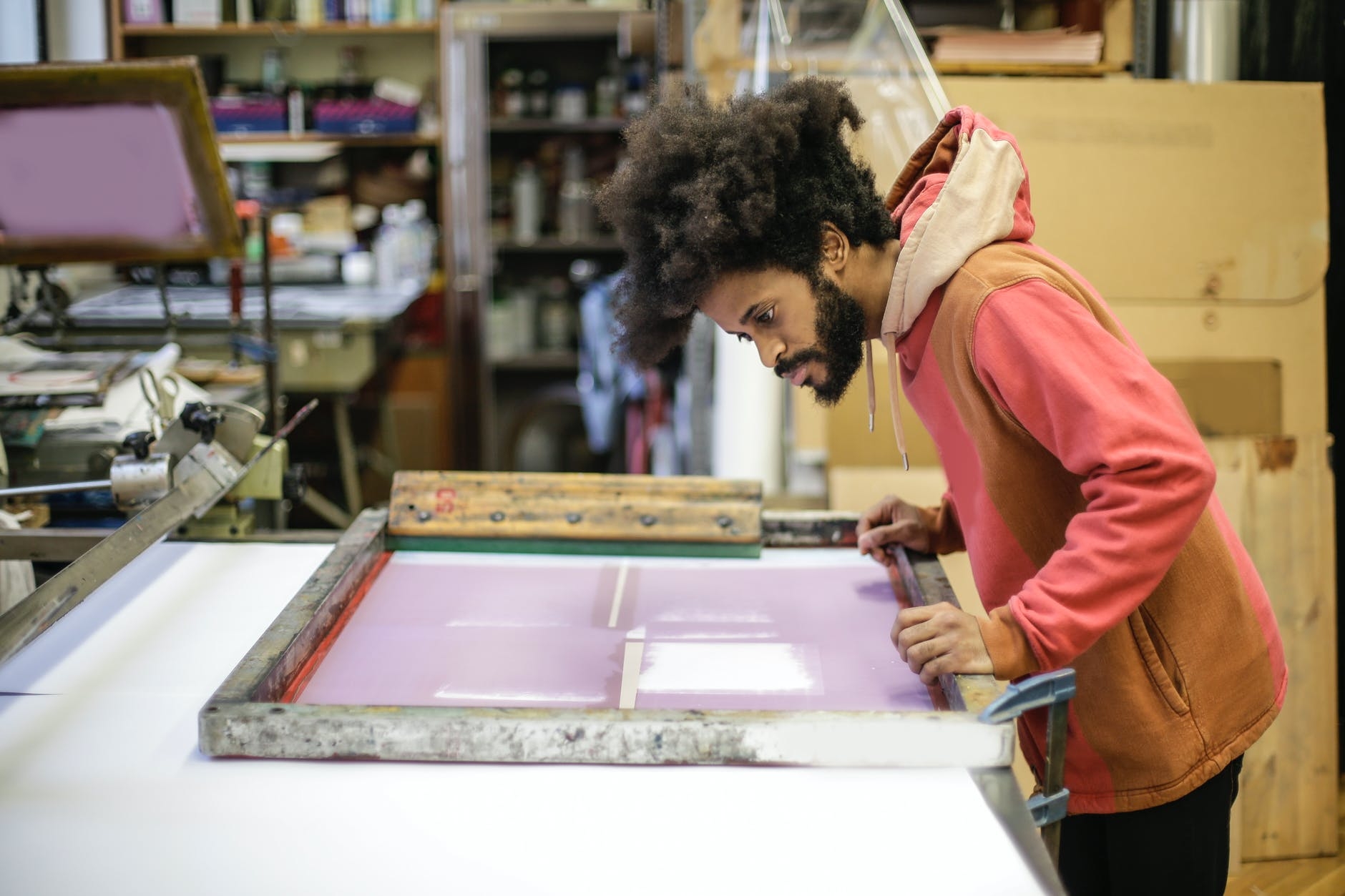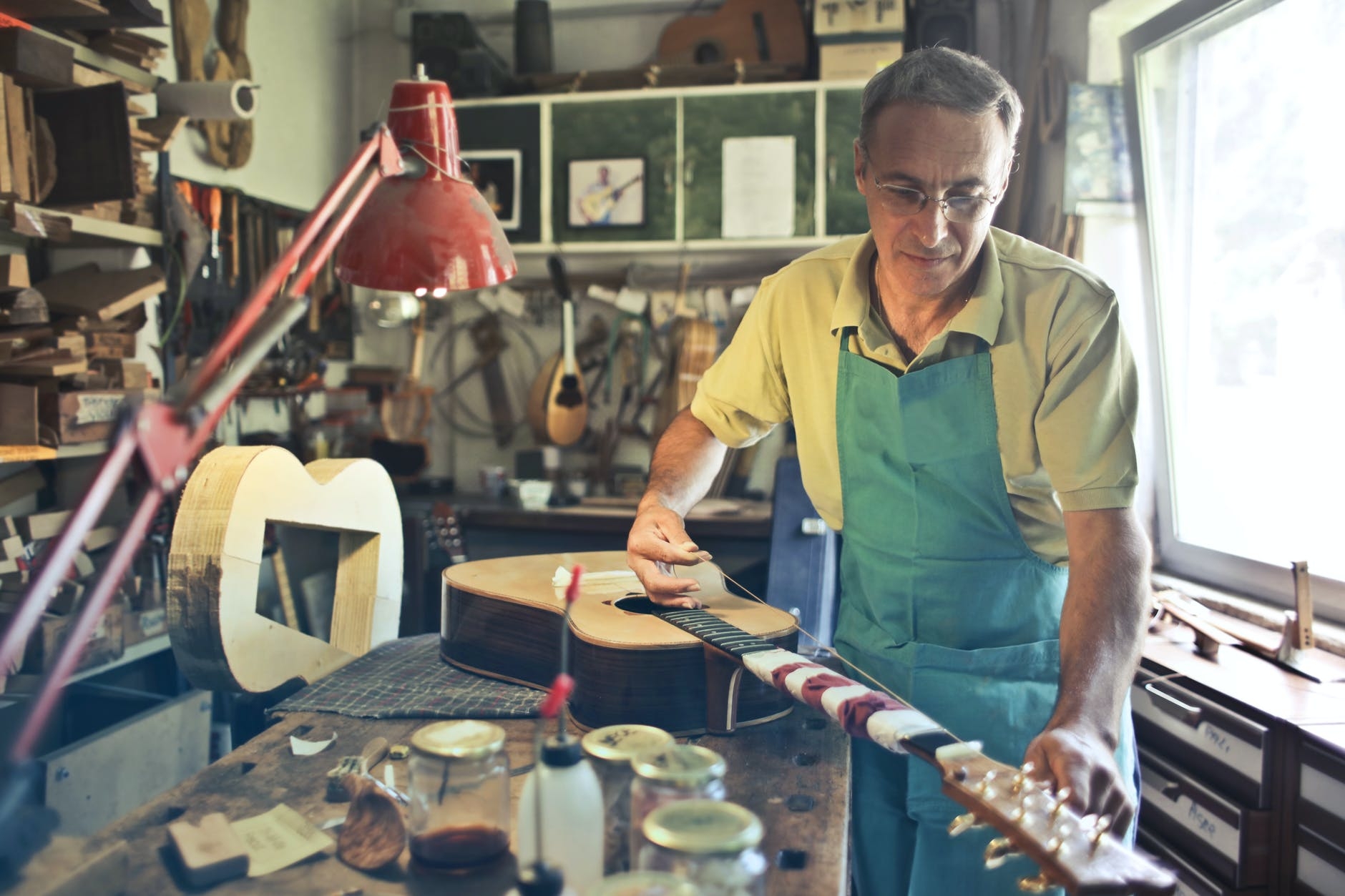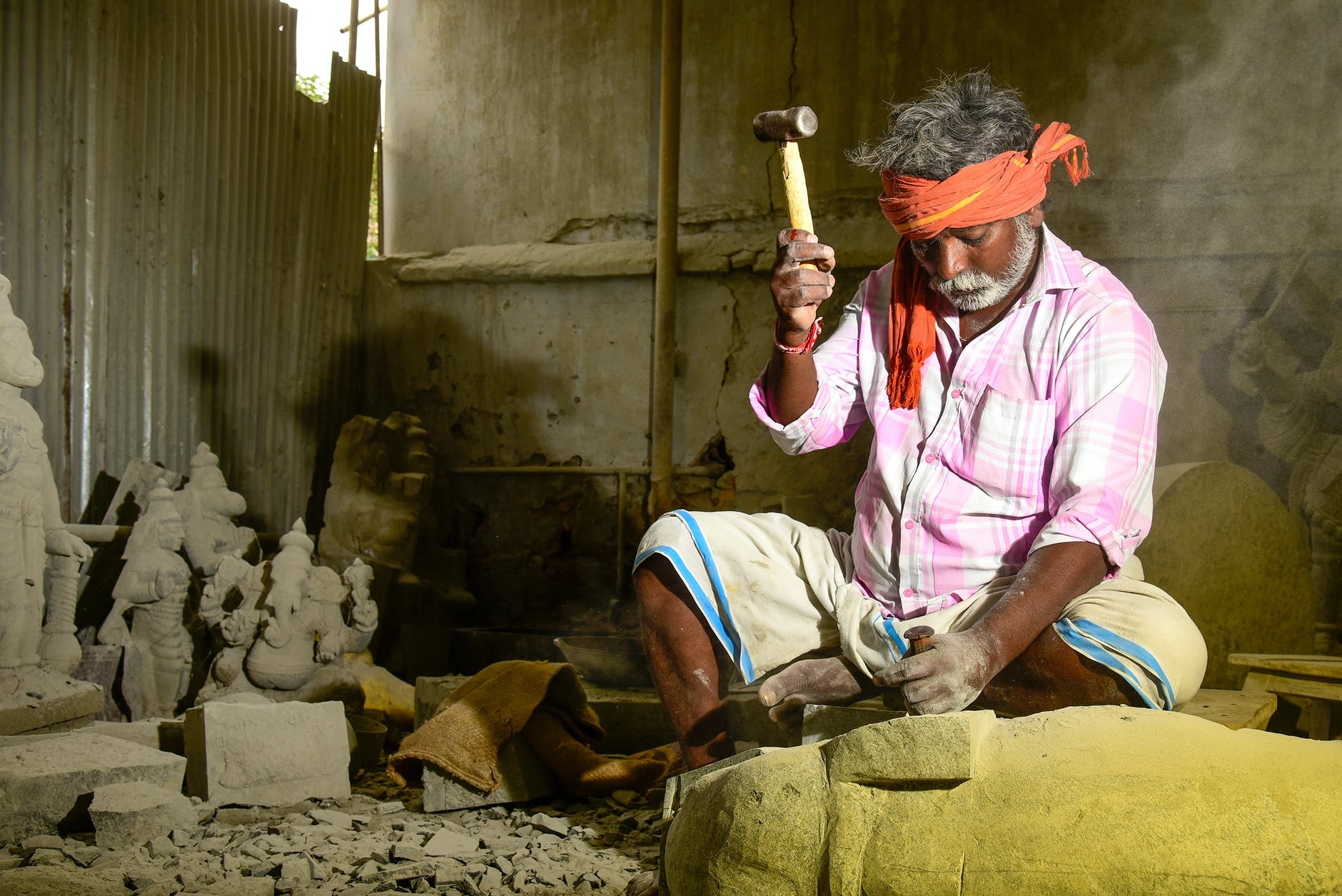
Why Are We So Obsessed With Artisans and Their Crafts?
A skilled craftsperson who builds, creates or makes objects either completely or partly by hand is a rarer commodity in the 21st Century than he/she/they once was. However, in this age of fast fashion where quality is often sacrificed in favour of low price and ease-of-purchase, many people are now crying out for the care, expertise and beautiful results of artisanal products. You might say that, arguably not since before the industrial revolution has the artisan had it so good.
Artisans may well not be able to mass manufacture to the degree that global corporations can, so they are arguably less well-positioned to provide to the fickle nature of trend-conscious consumers. However, by nature, independent artisan-produced work – as an example of high culture – establishes itself beyond the world of fashion. It outlives trends and takes on a timeless quality. And its scarcity is just one of the things that makes it more desirable.
Examples of artisanal products
Artisanal crafts run the gamut of cultural ephemera. For each of life’s needs (and most of its desires, too), there is a craft to meet it. So, artisans do not merely produce work that helps our lives to function more easily. They also work in a decorative capacity, helping to enrich our lives by making it more aesthetically pleasing.
Here are just some examples of the fields within which you will find the craftsmanship of artisans:
- Jewellery making
- Clothing design
- Furniture making (also called cabinet making)
- Homeware design (such as Knifemaking)
- Watchmaking / Clockmaking
- Food production
- Tool making
- Tile making
- Beer brewing
- Wine production
- Lace making
- Sign writing
- Pyrography (decorative wood burning)
- Glass blowing
- Lapidary (cutting and polishing decorative stone)
- Guitar making (a guitar maker is called a Luthier)
- Rug making

What happened to all the artisans?
Many (in fact, most) of the above trades were automated in the century-plus following the industrial revolution, meaning that many artisans and craftsmen were forced out of work (or into work for mass producers) and the qualities of those products have, in many instances, been affected as a result.
Factory production methods mean that decorative elements may have been sacrificed. Or, on the other hand, such methods may have over-perfected those elements so that they lose the handmade quality that made us fall in love with them in the first place.
Material components of handcrafted artisanal products, too, have largely been replaced by the mass market with cheaper alternatives to allow mass producers to lower their overheads, enabling them to be more competitive in the market (in other words, enabling them to sell more cheaply). One side effect of this (alongside the fact that they might not work as well or give us as much pleasure as artisanal products) is that mass produced objects don’t last as long as artisanal products and the mass market has capitalised on that by actually incorporating it into their production strategy.
Planned obsolescence is the process by which an object purposefully wears out, breaks or needs to be upgraded within a given period of time so that consumers will continue spending with the company that manufactured it. For the mass market, a beautiful handcrafted object that lasts a lifetime is no good because it loses the person who owns such an object as a customer.
This economic race-to-the-bottom has forced many people in the 21st Century, tired of the false economy of products that not only don’t look as beautiful as they once did, but also don’t last as long, to re-evaluate their relationships with the products that make up their lives. As a result, the market for handmade (or, at least, partly handmade) objects has seen a sharp increase in recent decades.
Back in 2016, The Guardian were already reporting that the £3 billion UK crafts market was growing by 4.5% per year and evidence of the claim came shortly after in 2017 when the total value of the UK retail market leapt from £351 billion to £366 billion within a single year. Today, 30% of the world’s population is made up by artisans, according to corporate anthropologists Keirsey Group, which suggests that the 21st Century craft boom may well have taken root, culturally speaking.

Why do we love products crafted by artisans?
The things that artisanal products give us that their mass-produced cousins don’t are all the things that were lost in the transition to mass production in the first place: better materials; better build quality; greater useability; and, crucially, that almost indescribable sense that something was made by a real person rather than by a machine.
You don’t need to be a craftsperson or an expert in manufacturing yourself to know whether or not a product feels sturdy, reliable and well-built. You can sense those things just by interacting with the product.
Where mass-produced goods get you is in the marketing and the language used to shape your experience of them – they make you want it in spite of your better judgment telling you it’s not as good as the handmade alternative. Artisanal products, on the other hand, rely on their intrinsic qualities to engage your desire: giving you that innate sense that you’re experiencing real quality.

Artisanal products are more likely to move us, emotionally
However, it may not be a simple matter of common sense regarding physical quality that makes us prefer the handiwork of artisans to that of mass producers. We must also consider our compulsion towards artistic appreciation – the ability to be moved by the products of artistic endeavour.
This quality in its most extreme form – when we cry, feel dizzy, experience increased heart rate or even faint upon encountering certain sensory stimuli (most often of artistic production) – is known as Stendhal syndrome, named after 19th Century French author Marie-Henri Beyle, best-known by his nom de plume Stendhal, who had just such reactions when looking at the Basilica of Santa Croce in Florence: one of the greatest examples of artisanal stonemasonry on earth.
Not everyone experiences Stendhal syndrome but it is said to be linked to empathy and, in terms of artisanal production, the feeling that we can’t quite believe that a member of our own species was able to produce something so seemingly otherworldly and beautiful.
Perhaps that is what makes us so driven to own the handiwork of artisans and craftspeople: the fact that they give us that permanent sense of being able to experience and empathise with another’s genius as it was poured into the work – right there in our homes as a function of our everyday lives.
After all, as Keirsey Group suggests, artisans share the following personality characteristics:
- They tend to be fun loving, optimistic, realistic and focused
- They pride themselves on being unconventional, bold and spontaneous
- They make playful mates, creative parents and troubleshooting leaders
- They are excitable, trust their impulses, want to make a splash, seek stimulation, prize freedom, and dream of mastering action skills
Is it any wonder we find their crafts so inspiring and so enriching? It’s almost as if the fruits of their labour bring a little bit of their personalities into our own lives.
We feel that, by engaging with the aesthetics of their work, we are more able to appreciate the passion, the creativity, the effort and even the hardship that went into producing it. Yes, the hardship. Isn’t our love for the tiny imperfections of handmade objects, which you don’t get in machine-produced objects, symptomatic of our empathy? Doesn’t it show just how much we appreciate the frustration that the artisan experiences in getting it wrong? And isn’t that, conversely, what makes it just so right?

The value of scarcity
Finally, as we suggest above, we should not ignore the emotional (and subsequent financial) value that the rare quality of handcrafted products adds to them. This, of course, ties into our wider sense of artistic appreciation and the idea that an artisan-produced object allows us to feel the passion poured into the work by the craftsperson.
When we experience the almost supernatural power of an artisan-crafted object to move us emotionally, we feel driven to want to own and have that object as a means of allowing us to tap into that power whensoever we feel like it. Because, we tell ourselves, there aren’t many of them around and what if we miss out on the opportunity?
The same goes for build quality and user experience – if a beautifully constructed, easy-to-use object that will improve our lives exists, but it only exists in a small quantity, we feel as if we should make sure we get it while we can.
This is why mass producers have learned the value of offering limited editions, which mimic the scarce quality that naturally occurs in artisan-produced goods. It is what a post-structuralist would call a simulacrum of scarcity – a copy without an original. Limited edition goods are mass produced (and thereby infinitely reproduceable) yet are limited (produced with a predetermined maximum amount) by design, simply as a result of knowing that humans respond to scarcity as a symbol of great value and will race to own them.
The limited nature of artisanal products, on the other hand, is simply an indicator that the artisanal object contains all those elements that we both need and desire from the stuff of life – useability (making our lives easier), build quality (longevity) and aesthetic beauty (inspiring our artistic appreciation). Which is why we tend to feel so much better about investing in artisanal products than we do rushing out to buy expensive limited editions: one has tangible value that we can experience beyond the moment of purchase; the other has limited value that, at worst, may not even be enjoyed beyond the moment of purchase.

The craft savvy consumer
Here in the 21st Century commercial environment, consumers have gained back much of the power they lost to mass production in the 20th Century. That’s arguably because the sheer weight of experience of poorly produced goods that proliferated their lives became too frustrating, too time-consuming and too expensive (replacing the same piece again and again and again is a costly affair).
Whether or not buyers of artisanal products are aware of the ins-and-outs of their desire for handcrafted quality, one thing is for certain: they instinctively know the importance of real craftsmanship. And, for that reason alone, they are choosing it in ever greater numbers.